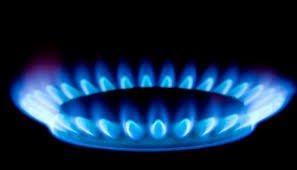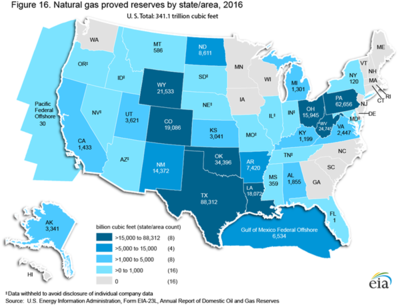Natural Gas Properties
Introduction

Natural gas is a mixture of light, gaseous hydrocarbons, consisting primarily of methane, the lightest gas in the mixture. It's exact composition varies, but nitrogen and sulfur compounds are present in much lower concentrations than in the other fossil fuels, coal and petroleum. Thus, natural gas burns with much less pollution and greater efficiency than coal or petroleum and is becoming the fossil fuel of choice for the production of electrical power. As of 2016, natural gas-fired plants contributed 34% of the electrical power generated in the United States, coal was second at 30% and nuclear power was third at 20%.
Natural Sources of NG
Conventional sources for natural gas are those in which the gas exists in underground reservoirs from which the gas can be comparatively easily and economically extracted. These deposits often exist in conjunction with petroleum, with the proportion of natural gas to petroleum dependent on the depth and subsequent temperature and pressure of the reservoir.
In relatively shallow reservoirs there is more petroleum than natural gas. In the deepest reservoirs one finds almost pure natural gas. These reservoirs were the first to be discovered and exploited and have for decades been the primary source in the U.S. for domestic natural gas.
Unconventional natural gas sources are best defined as those that have been difficult or economically too expensive to develop. As technologies advance and conventional resources are depleted, some unconventional sources, i.e. shale gas, are being greatly expanded.
Reserves

The potential supply of natural gas is quite large. Developments in the extraction of natural gas from shale formations have greatly increased the recoverable amount of domestic natural gas, thereby substantially decreasing US dependence on foreign sources. The above image shows the extent of proved natural gas reserves in the U.S. in 2016.
Although natural gas is a finite, non-renewable resource, its cleanliness, compared to oil and coal, and its relative domestic abundance have prompted some to propose natural gas as a possible "bridge" from our current reliance on oil and coal to a future based on sustainable energy sources.